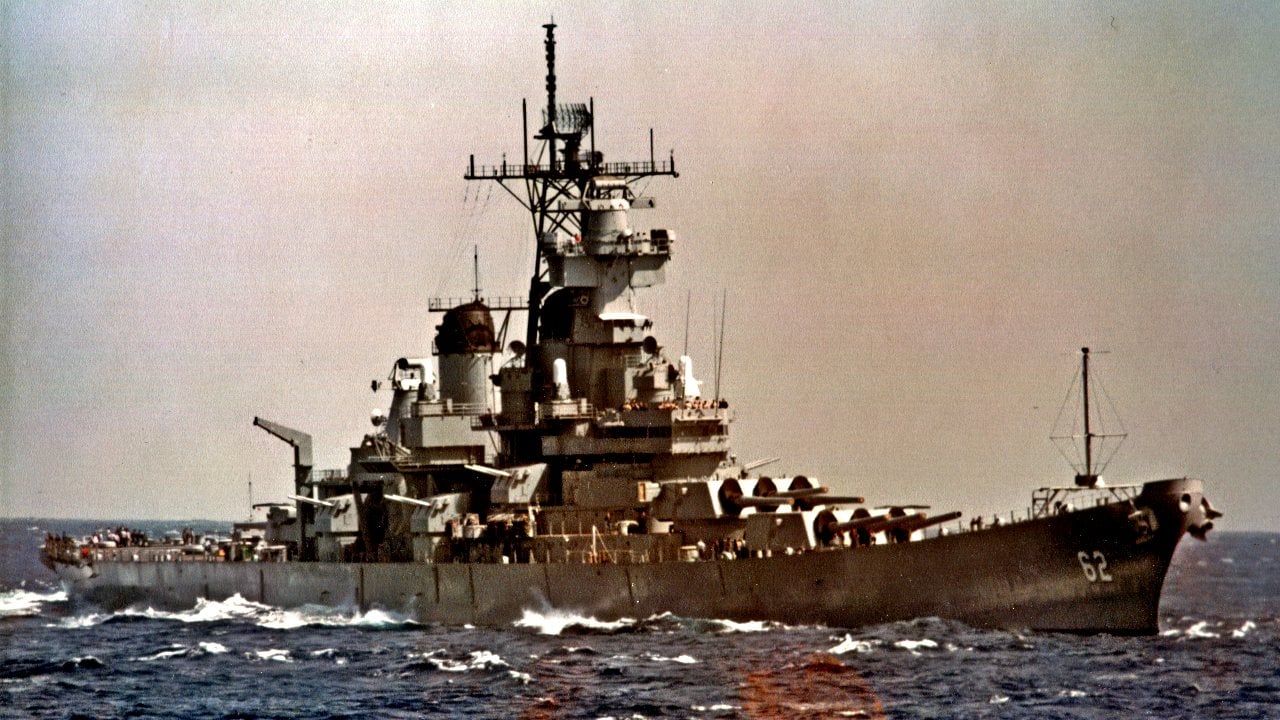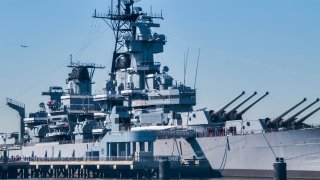Iowa-Class USS New Jersey Just Finished Up a Massive 'Comeback'
The USS New Jersey, one of the most decorated battleships in U.S. Navy history, recently underwent a critical restoration at the Philadelphia Naval Shipyard.
Summary and Key Points: The USS New Jersey, one of the most decorated battleships in U.S. Navy history, recently underwent a critical restoration at the Philadelphia Naval Shipyard.
-Commissioned in 1943, "Big J" served through multiple conflicts, earning 19 battle stars. The restoration included drydocking, hull repairs, and a new paint job to preserve the ship’s structural integrity and historical authenticity. Public donations and state funds covered the $10 million cost.
-Now returned to Camden, New Jersey, the refurbished battleship will continue to serve as a museum, offering visitors a glimpse into America’s naval legacy.
The Preservation of Iowa-Class Battleship USS New Jersey is a Win for America
There was a time in America’s naval history when the aircraft carrier was not the primary capital ship. Shortly before the Second World War erupted, it was the battleship that ruled the waves. Among America’s iconic battleships was USS New Jersey, affectionately referred to as “Big J” by those who served aboard the steel beast. New Jersey was commissioned in 1943, right at the height of America’s involvement in World War II, and served through many conflicts thereafter.
Indeed, the Big J is one of the most decorated battleships in the history of the U.S. Navy. This legendary warship gained 19 battle stars, an astonishing feat.
Because of the Big J’s legacy, the Navy preserved this battleship as a museum ship.
Alas, as with all human creations, New Jersey is at a point in her long life where she is in dire need of restoration. Age is rarely kind to anything – and especially not to a warship that has floated in the ocean for decades. Thankfully, the restoration project is complete.
The Great Retrofit
Part of repairing the Big J involved moving her from Camden, New Jersey, where she’s been berthed for more than 20 years, over to the Philadelphia Naval Shipyard, where New Jersey was built.
In Philadelphia, New Jersey received a complete retrofit. One of the key parts was the drydocking process. This is where engineers remove a ship from the water and assess any damage done to her hull beneath the sea. Without this critical process, a ship’s structural integrity remains forever in doubt.
Part of the restoration included a complete cosmetic rebirth in the form of a much-needed paint job. This was done both to enhance the visual appeal of the historic boat and to better protect the ship against further erosion. Shipyard personnel needed to remove marine growth on the warship’s underside and apply new paint coats, all while preserving the historic integrity of the battleship. It was an arduous and expensive task.

Another key element of the retrofit was ensuring that the Big J is structurally sound. Engineers were tasked with repairing New Jersey’s through-hull openings to ensure the battleship remained watertight. After 81 years of floating and involvement in four major wars, the battleship’s watertightness is one of the most important parts of the retrofit.
Because New Jersey is no longer a ship of the line but a museum ship, the public needed to be engaged in its restoration. With public engagement, the project was funded to a tune of $10 million. State funds, grants, and public donations all ensured those funds were gathered. Once New Jersey’s retrofit was completed in Philadelphia, she was again plopped into the drink and sailed back down to Camden, where she was met with a hero’s welcome by the public.
What the Future Holds for USS New Jersey
Now that she has been refurbished and given a wonderful new lease on life, New Jersey will be returned to use as a museum ship, open to the public, where Americans of every age will be able to experience the power and majesty of America’s 20th century naval power.
Author Experience and Expertise: Brandon J. Weichert
Brandon J. Weichert, a National Interest national security analyst, is a former Congressional staffer and geopolitical analyst who is a contributor at The Washington Times, the Asia Times, and The-Pipeline. He is the author of Winning Space: How America Remains a Superpower, Biohacked: China’s Race to Control Life, and The Shadow War: Iran’s Quest for Supremacy. His next book, A Disaster of Our Own Making: How the West Lost Ukraine, is due October 22 from Encounter Books. Weichert can be followed via Twitter @WeTheBrandon.
All images are Creative Commons or Shutterstock.
From the Vault
Russia Freaked Out: Why the U.S. Navy 'Unretired' the Iowa-Class Battleships
Battleship vs. Battlecruiser: Iowa-Class vs. Russia's Kirov-Class (Who Wins?)


